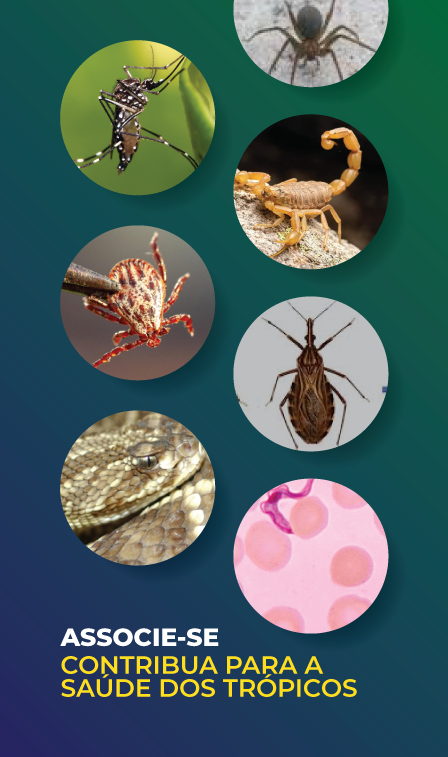
Rare skin manifestation of tularemia: Sweet syndrome
The typical cutaneous manifestations of tularemia include papular rash, erythema nodosum, and erythema multiforme. Patient presented with a rare cutaneous manifestation
03/02/2025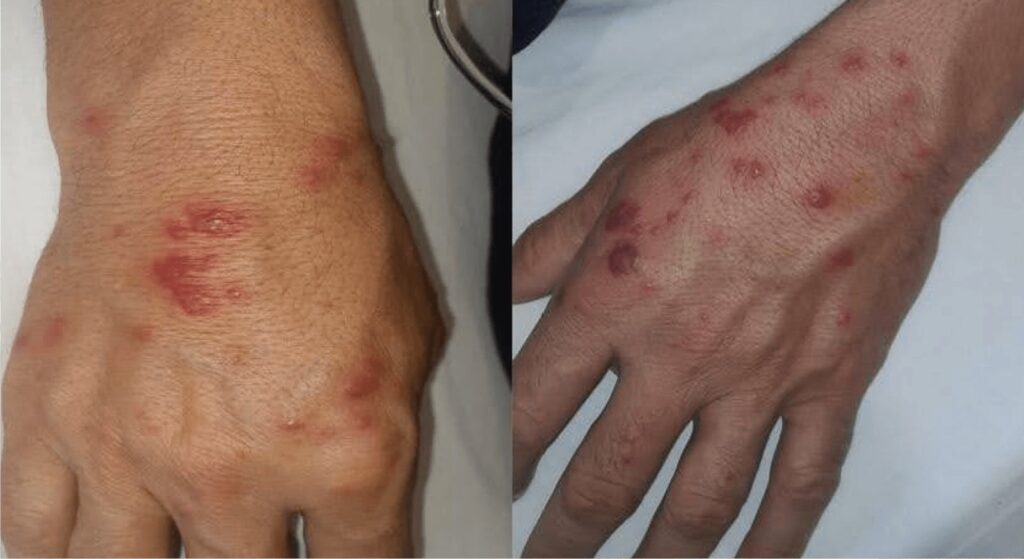
Erythematous plaques on the dorsal surface of both hands
Karaşahin Ö – Rare cutaneous symptoms of tularemia
Ömer Karaşahin[1]
[1]. Erzurum Research and Education Hospital, Department of Infectious Diseases and Clinical Microbiology, Erzurum, Turkey.
Corresponding author: Ömer Karaşahin. e-mail: mrkrshn@hotmail.com
Authors’ contribution
OK: Conception and design of the study, Analysis and interpretation of data, Final
approval of the version to be submitted
Conflict of Interest
None.
Financial Support
None.
Orcid
Ömer Karaşahin: https://orcid.org/0000-0002-4245-1534
A 49-year-old man was admitted with a 10-d history of fever, chills, and myalgia along with a 2-d history of painful skin rash on the hands. Physical examination revealed asymmetrical erythematous plaques on the dorsal surfaces of both hands (Figure 1). Additionally, a lymphadenopathy measuring 2.5–3.0 cm in size was noted in the left cervical region. Laboratory tests showed elevated C-reactive protein levels and neutrophilic leukocytosis. Ultrasonography revealed a cystic-necrotic lymph node in the left cervical region. A subsequent Francisella tularensis microagglutination test yielded a positive result, with a titer of 1:640, and streptomycin treatment (10 mg/kg twice daily) was initiated. Histopathological examination of the skin lesions revealed edema, hemorrhage, and inflammation, including polymorphonuclear leukocytes in the papillary dermis, which is consistent with Sweet syndrome. On the 5th d of hospitalization, the size and pain intensity of hand lesions increased (Figure 2). Methylprednisolone was added at a dose of 40 mg/day and discontinued after 7 d. After 14 d of antibiotic therapy, the patient’s clinical symptoms completely resolved, and the laboratory results improved (Figure 3). Sweet syndrome, believed to be a hypersensitivity reaction to bacterial, viral, or tumor antigens, was initially reported to be associated with tularemia by Ruiz et al.1. The typical cutaneous manifestations of tularemia include papular rash, erythema nodosum, and erythema multiforme1,2. Our patient presented with a rare cutaneous manifestation of tularemia. Furthermore, unlike the two previously reported patients, our patient showed no clinical response to antibiotic treatment alone1,3. Therefore, methylprednisolone was added to his treatment.
Acknowledgments
I thank the nurses involved in the care of this case.
References
- Ruiz AIB, González A, Miranda A, Torrero V, Gutiérrez C, García M. Sweet’s syndrome associated with Francisella tularensis infection. Int J Dermatol. 2001;40(12):791-3.
- Şenel E, Satılmış Ö, Acar B. Dermatologic manifestations of tularemia: a study of 151 cases in the mid‐A natolian region of T urkey. Int J Dermatol. 2015;54(1):e33-7.
- Mualla P, Haydar PA, İsmail Ö, Fatma S. Erythema nodosum and Sweet’s syndrome in patients with glandular tularemia. Int J Dermatol. 2011;50(7):866-9.
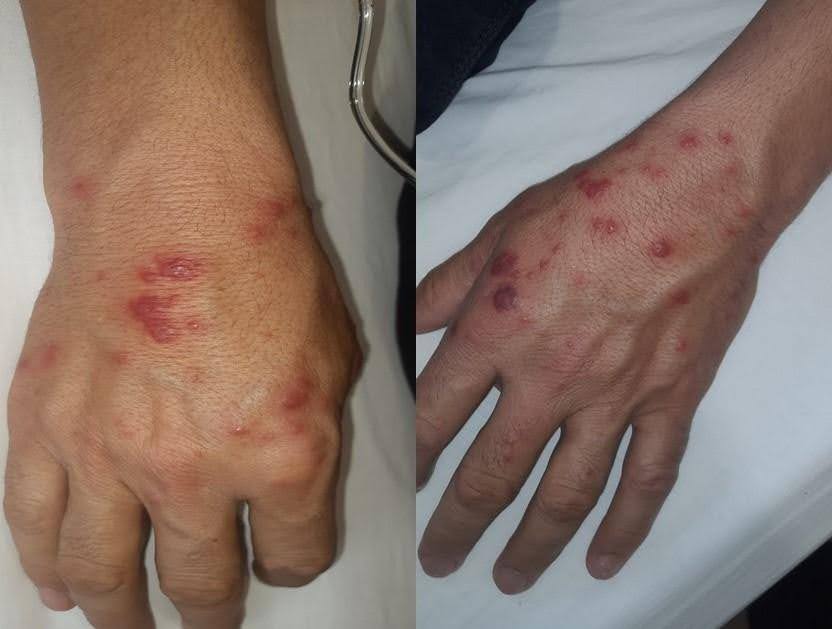
FIGURE 1: Erythematous plaques on the dorsal surface of both hands.
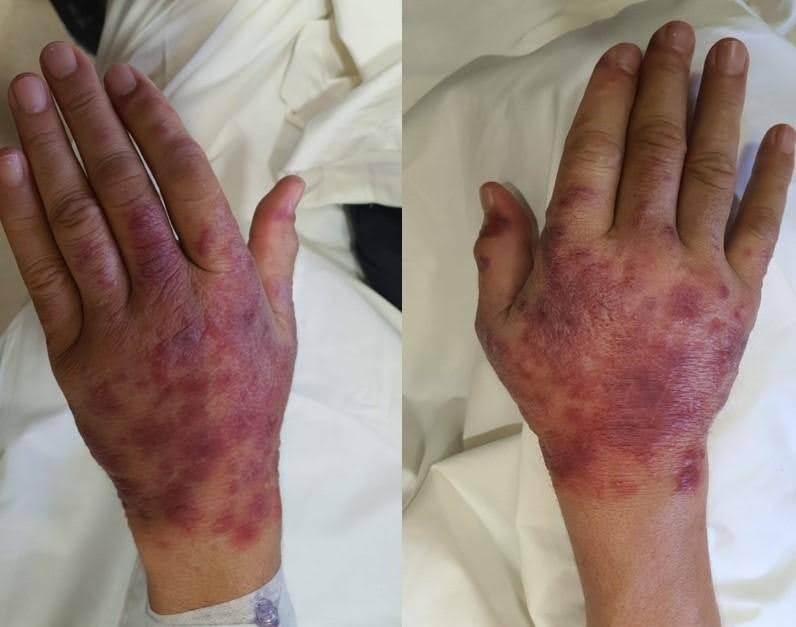
FIGURE 2: Worsening of hand lesions.
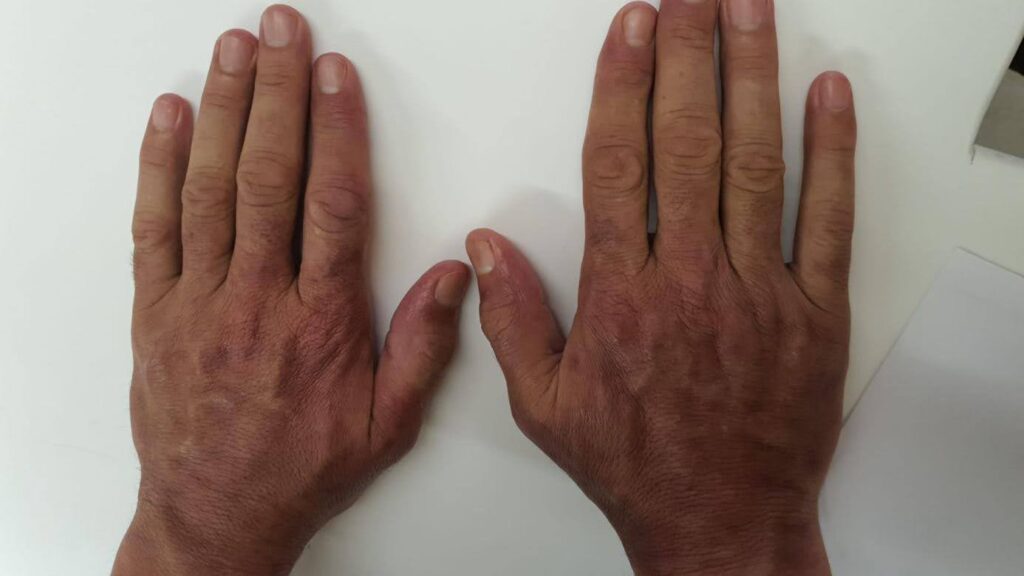
FIGURE 3: Lesion resolution.
**Esta reportagem reflete exclusivamente a opinião do entrevistado.**



